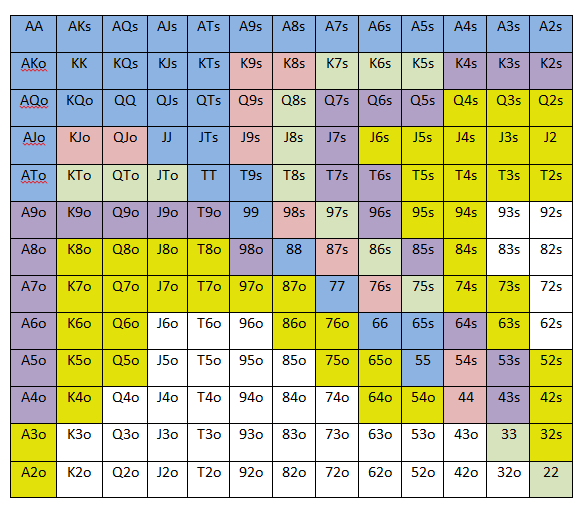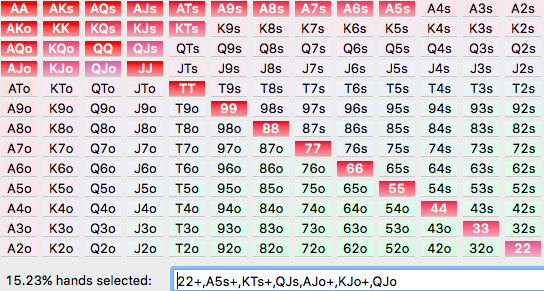Have you ever found yourself mid-game staring at your HUD while facing an open from a player with an RFI stat of 21% and thought to yourself, “What hands are in his range?” Or while playing live, have you estimated that your opponent calls an open 40% of the time but didn’t know what hands comprise that range?
Poker superstar Daniel Negreanu lets us into his poker brain as he breaks down how to look at poker hands using ranges and assigning them to our opponents. He also talks about counting combinations and the importance of blockers. When a poker player has bet or played their hand in a manner that limits its possible holdings to one of two distinct subsets, he is said to have a polarized range. Okay, Now Explain It Like I’m. Starting Hand Ranges and Factors Affecting These Ranges The ways a lot of people justify the hands they choose to play can be summed up in two words – hilariously awesome. We’ve heard people mention that they play hands because they’re their favorite hands, because the hands have some really cool and fun names, or that they saw someone. The game of poker is a card game played among two or more players for several rounds. There are several varieties of the game, but they all tend to have these aspects in common: The game begins with each player putting down money allocated for betting. During each round of play, players are dealt cards from a standard 52-card deck, and the goal of each player is to have the best 5-card hand at.
Poker Hand Ranges Explained Chart
Well, I’ll show you the easy way to learn poker ranges for quick reference in the future.
First, here’s a Poker Range Chromatic I created for my own use:
Poker Hand Ranges Explained Drills
I wanted to learn where each hand falls within a range and the above is what I came up with. I used Flopzilla to figure out which hands fall within each percentage grouping. I just started with a 5% range, then went by 5’s up to 40%, then followed that with 10’s up through 60% then 75%. I used color coding to help visualize the ranges.
I then took the following steps to learn the ranges:
- Printed the chromatic I made, laminated and posted it on the side of my computer monitor for quick in-game reference.
- Created 11 flash cards for use each night as part of my warm-up, and I put the following on them:
- For one week during my study session I would do a hand history review from the previous night’s session and each time I faced an open I looked at their RFI Stat in that position and determined what range it fell under. I would say aloud, “20% in the CO… that’s 22+, A7s+, ATo+, K9s+, KTo+, Q9s, QTo+, JTo and 98s+.” That’s all there was to it. After that first week I got them all down. This is especially helpful when playing live as I can’t glance to the side of my screen to get an estimate on an opp’s range. Now, it’s easier to remember the bottom of the ranges as you’re trying to learn these. So, when thinking about 20%, the bottoms are 33, A7s, ATo, Q9s, JTo and 98s. If you just remember those 6 hands for 20%, you know it includes everything better than those. So if the question arises for a hand like K8s, you know that K9s is the bottom at 25% and K7s is the bottom of 30%, so it’s within the 30% range and just under the 25% range.

Please let me know if you would make tweaks to these ranges as I always love feedback.

Study hard and make your next session the best one yet!

- The 12 Days of Christmas 2020 Podcast Episodes - December 14, 2020
- Strategies and Action Steps from the Quick Wins Poker Course - November 24, 2020
- How to Quickly Understand Online Tournament Players – Podcast #318 - November 18, 2020
